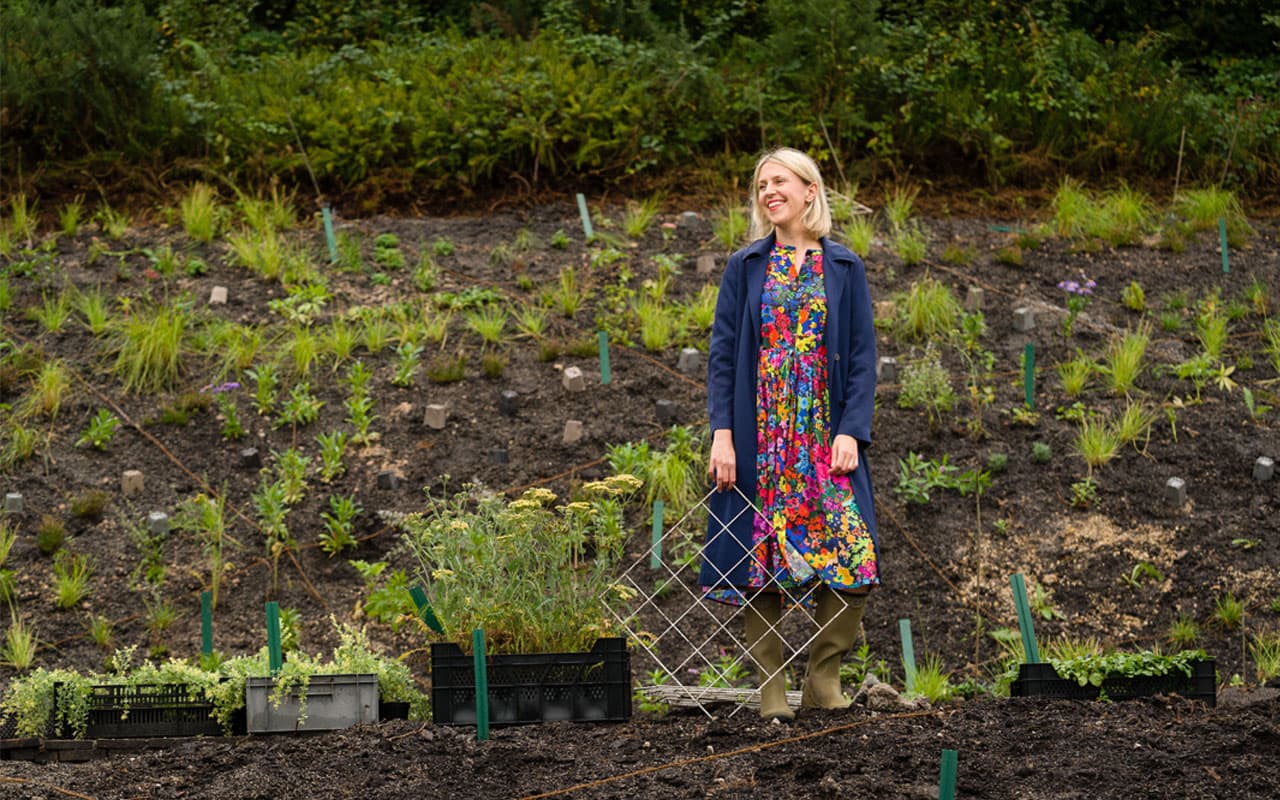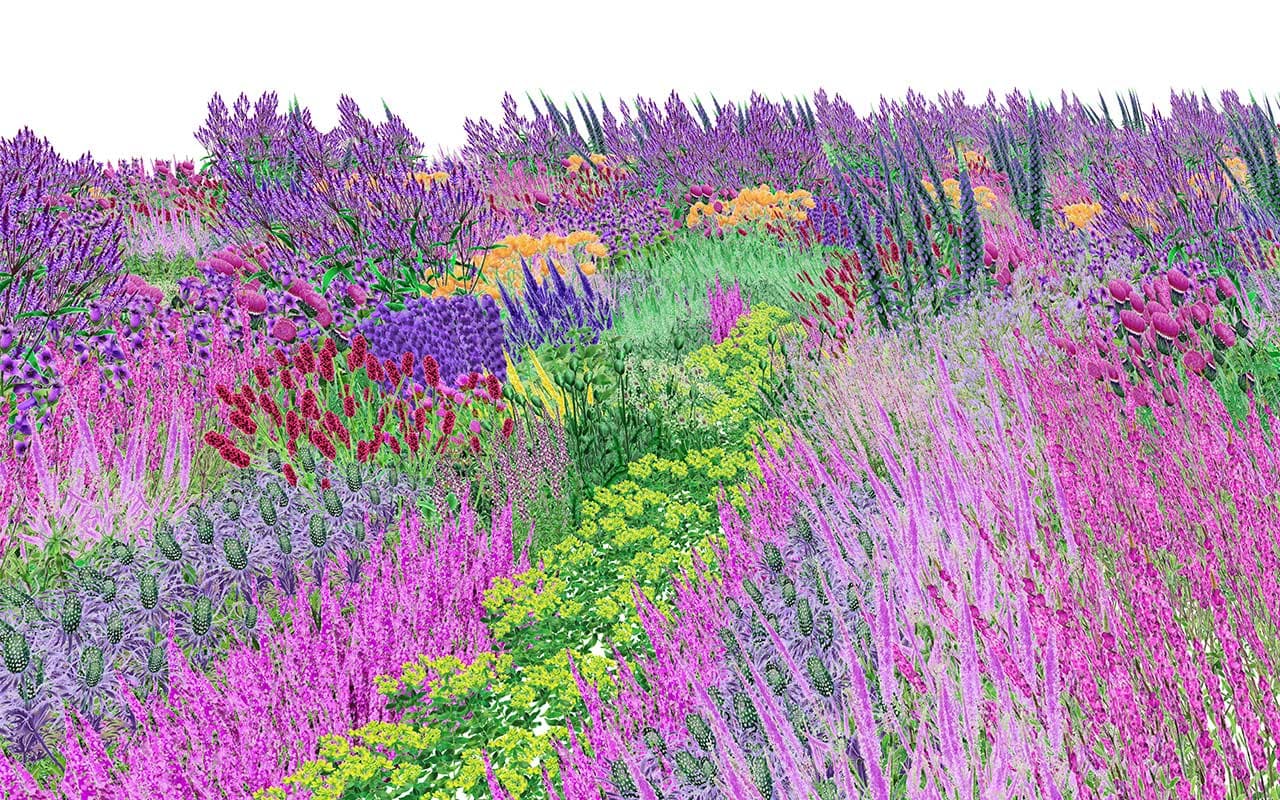Bees, butterflies, and other pollinators are essential for plant species and ecosystems to flourish. Unfortunately, these crucial insects are facing alarming population decline due to pesticides, human-made habitat loss, and climate change. This prompted Alexandra Daisy Ginsberg to ponder what gardens would look like if they were designed from a pollinator’s perspective, rather than our own.
It’s not an unusual question for Ginsberg to ask. The Londoner was already investigating our fraught relationship with nature through experiential artworks that explore designers’ impulse to “better” the world. “What is better?” she asks. “Whose ‘better’ is being delivered, and who gets to decide?” In one artwork, called Resurrecting the Sublime, in collaboration with Christina Agapakis of Ginkgo Bioworks and Sissel Tolaas, she recreates scents from extinct flowers lost to 20th-century colonialism; Machine Auguries, meanwhile, sees an AI deepfake recreate a synthetic dawn chorus from thousands of birdsong snippets impacted by human-made light and sound pollution.
For Pollinator Pathmaker, Ginsberg teamed up with horticulturists at Eden Project, pollinator experts, and an AI scientist to devise an algorithmic tool that will make the most empathetic landscape design for a garden. What exactly does that mean? Ginsberg defines it as planting that supports the greatest diversity of pollinator species. The custom algorithm chooses and arranges flora from a curated palette of locally appropriate plants, yielding slightly different gardens each time that are guaranteed to support the maximum number of pollinator species possible.

